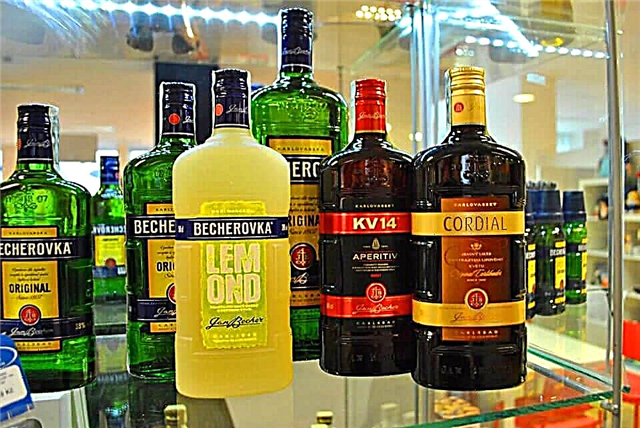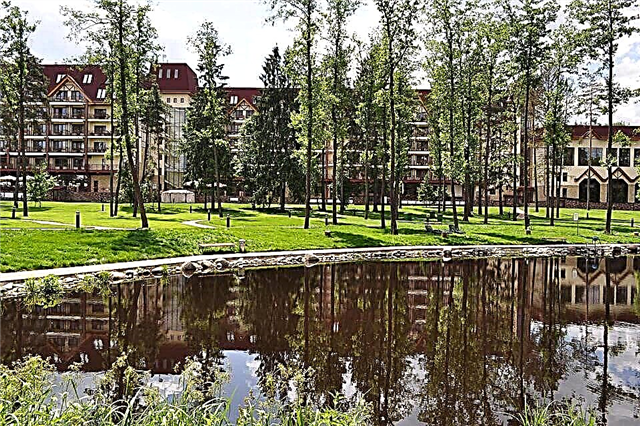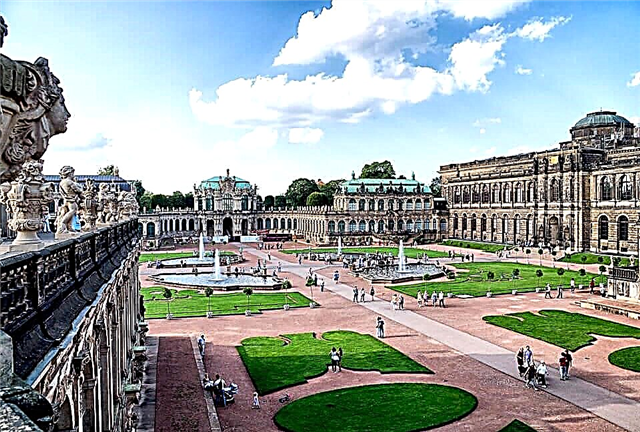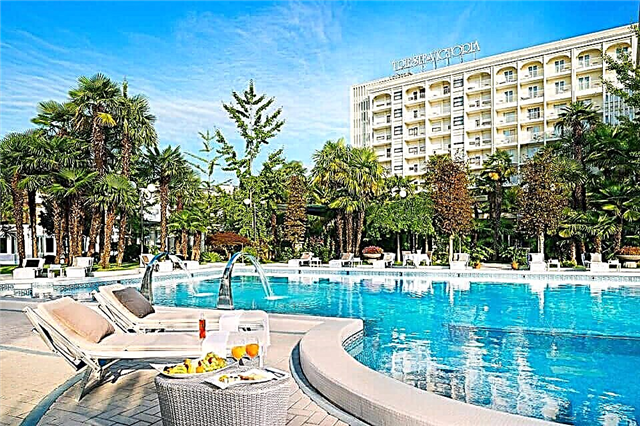How does the Pskov region differ from other parts of Russia, and why do so many travelers come to the Pskov region? Russian and foreign tourists tend to visit those places that are described in any history textbook. They go to see the ancient Pskov Kremlin, legendary medieval fortresses, Lake Peipsi and shrines of ancient Orthodox monasteries. Many are attracted by the amazingly beautiful Pskov nature, which inspired the poet A.S. Pushkin and composers N.A. Rimsky-Korsakov and M.P. Mussorgsky.
Content:
sights
History of the Pskov region
The Novgorod Chronicle mentions Pskov since 903, but archaeologists are convinced that the urban settlement was formed here much earlier. Since the end of the 11th century, the city and the surrounding lands were part of the ancient state that remained in history under the name "Kievan Rus". When feuds began between the appanage princes, Veliky Novgorod took possession of the Pskov lands. However, even then, Pskov had relative independence, and the free Novgorod veche was forced to reckon with it.

Holy Dormition Pskov-Pechersky Monastery
The Pskov region was located in the northwest of Ancient Rus and has always occupied a border position. Despite constant military conflicts with the knights of the Livonian Order and Lithuania, the locals were active in trade with Narva, Polotsk, Riga and Dorpat, and later with other European cities. Pskov merchants brought for sale valuable furs, dressed leather, honey, wax, bristles, lard and flax, and from Europe they received in return precious metals, lead, tin, spices, delicious wines, good-quality cloth and parchment.
At the beginning of the 18th century, when Russia was waging a long-term Northern War, Peter I visited the Pskov region several times. Another significant event took place near Pskov three centuries later. After the growth of revolutionary sentiments, in early March 1917, the last Russian emperor Nicholas II signed here a Manifesto on the abdication of the Russian throne.
During the Great Patriotic War, the defense line passed along the valley of the Velikaya River. In the region there was a partisan movement that actively resisted the enemy. The German occupation of the Pskov region lasted until 1944.

Izborsk fortress
Ancient fortresses
The border position and constant threats from neighbors led to the construction of many defensive fortifications. Unlike European fortresses, Russian medieval fortresses were large, so that in the event of an enemy arrival, the peasants of the surrounding villages could hide in them. By the beginning of the 16th century, there were about 30 “stone towns” in the Pskov region, built according to all the rules of fortification art. The fortifications of Izborsk, Gdov, Vyshgorod, Opochka, Vel'ya, Voronich and other places were the first to take on the attacks of enemy troops, giving the main city, Pskov, time to prepare.
An eloquent fact speaks of the scale of the battles. According to the confirmed chronicle evidence alone, 123 military conflicts with neighboring countries took place on the Pskov lands in the period from 1116 to 1709. Not every state is capable of dealing with so many wars.
Today large-scale festivals “Battle on the Ice”, “Iron City” and “Isaborg” are held in the region. These are interesting reconstructions of famous battles, performed by the forces of military history clubs. Any tourist who comes to the holiday can not only enjoy the spectacular spectacle, but also try on the historical costumes of medieval knights and Russian soldiers.

Porkhovskaya fortress
Holy places
Every year, thousands of pilgrims come to the Pskov region, wishing to touch the local shrines and see the ancient Orthodox monasteries and temples. Most travelers come to Pskov itself. Walking around the ancient city, it is easy to notice that the domes of churches rise almost on every street, especially in the historical center. There are more than forty of them here.
The main Pskov temple, the Trinity Cathedral, was founded by Princess Olga long before the time when Russia adopted the Christian faith. Wall paintings of the 12th century, rare in beauty, have been preserved in the Spaso-Preobrazhensky Mirozhsky Monastery. Anyone can visit the icon-painting workshop at this monastery.
Not far from Pskov is the Snetgorsk women's monastery, founded in the 13th century. The monastery church of the Nativity of the Blessed Virgin Mary is decorated with old frescoes.
The Pskov village of Vybuty is the birthplace of the first Christian woman of Russia - Princess Olga. It stands on the Velikaya River, 15 km from Pskov. In Vybuty you can see a small but very beautiful temple of Elijah the Prophet and several memorial sites associated with the famous princess, for example, the well "Holguin Klyuch".

Spaso-Kazan Simansky Convent
Many pilgrims come to the Spaso-Eleazarovsky Monastery, which appeared on the Pskov land in the middle of the 15th century. In this monastery lived an elder revered by Christians - the chronicler Philotheus, who, referring to the Grand Duke Vasily III, called Moscow the third Rome. It was in this monastery that a copy of the ancient text "The Lay of Igor's Campaign" was copied, which was later discovered by Alexei Ivanovich Musin-Pushkin.
Believers also visit the St. John the Theological Krypetsky Monastery, Nikandrov Hermitage and the Holy Dormition Svyatogorsk Monastery, which is located in the Pushkin Hills. A separate place among other Orthodox shrines of the Pskov region is occupied by the Holy Dormition Pskov-Pechersky Monastery, known throughout Russia, which began with a cave dug by the Monk Jonah.
Noble estates
Noble estates were built on the Pskov lands from the 18th to the beginning of the 20th centuries. There used to be more than 250 of them. Large estates with parks belonged to wealthy metropolitan nobles - the Stroganovs, Vrevsky, Shakhovsky, Gagarin and other eminent Russian families. The rest of the Pskov estates were owned by small-scale noblemen.

St. John the Theologian Savvo-Krypetsky Monastery
Today, there are about two dozen manor complexes left, and 12 memorial estates and museums occupy a special place among them. Three estates are part of the Mikhailovskoye Pushkin Museum-Reserve. In the village of Naumovo, you can visit the estate that belonged to the Russian composer M.P. Mussorgsky, and in Vechash and Lyubinsk - in places owned by N.A. Rimsky-Korsakov. In the village of Polibino there is a manor where the first woman lived - professor of mathematics S.V. Kovalevskaya.
Camping
One of the reasons to visit the Pskov region is the beauty of the local nature. In summer, discreet northern colors color the endless fields of flax. And the colors of the Pskov autumn and the endless snowy expanses have inspired the most famous Russian poets more than once. Pskov region is a Mecca for mushroom pickers and fishing enthusiasts. It is worth coming to the shore of Velikaya when fishing for the famous Pskov smelt begins here.
A national park has been created in the Sebezhsky district of the region. It has an area of 50 thousand square meters. km and preserves a natural complex unique in terms of biological diversity. Suffice it to say that the park is home to 49 species of mammals and over 200 species of birds. In summer, on the forest edges, you can pick raspberries, strawberries, blueberries and lingonberries, and in the fall, cranberries ripen in the swamps and along the lake shores. Neolithic sites and ancient burial mounds were found in Sebezhsky Park. For travelers in this protected area, picturesque recreation areas have been created.

Mussorgsokiy's estate
The Bezhanitsky District is home to the largest swamp system in Europe, which is more than 10 thousand years old. Bogs of various sizes were formed after the retreat of the Valdai Glacier and are now protected in the Polistovsky Reserve. In the unique ecosystem, you can see many plants and animals listed in the Red Book of Russia. For travelers, the specialists of the reserve offer interesting one-day excursions.
An amazingly beautiful place is located in the middle of the Pskov Lake. More precisely, in its southeastern part. These are the small Talab Islands. They are removed to 25 km north-west of the regional center and got their name from the name of the first settler - Tala. People settled on the islands as early as the 11th century, and their main occupation was fishing. Local residents caught delicious Pskov smelt and sold fish to Muscovites and residents of Riga, residents of Warsaw and St. Petersburg.
Types of tourism popular in the Pskov region
Many travelers come to the Pskov land to see the famous cultural and historical monuments. Therefore, the most popular are excursions and pilgrimage tours. Some tourists tend to the Pskov region for active sports and outdoor recreation, because the Pskov expanses are a place where you can relax from the bustle of the city and have a great time with friends.

Holy Ascension Cathedral
Horse riding is very popular in the region. Horseback riding is carried out along Stary Izborsk, the coast of Lake Pskov and the sights of the Pechora region. In summer, cycling tours, diving on the Pskov-Peipsi Lake, riding on catamarans and water scooters are also in demand.
In the winter months, tourists tend to the Malskaya Valley and Vashina Gora, where slopes for downhill skiing, snowboarding and cheesecake riding are equipped. There are cross-country skiing trails in the nearby forests. Travelers arriving in the Pskov region can stay at recreation centers and sports centers, in guest houses and hotels, as well as, if desired, use the services of Pskov travel companies.











